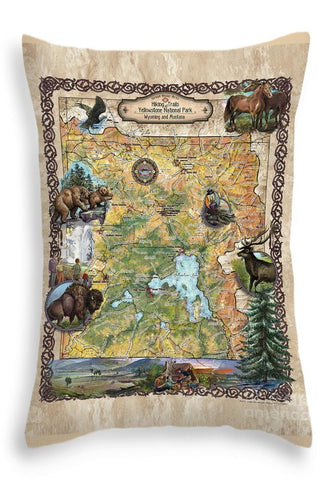Charleston Historic Antique Map Art Print Poster Vintage Artwork Wall Art Decor For Home Office Livingroom Classroom Lakehouse Any Room Decor & Great Gift
This beautiful map will add lovely color to your room with the famous sights and wonderful waterways. If you order the largest size you can read the words several feet away. Great for your Charleston home or a wonderful gift for a friend.
SMALL PRINTS
11"x17" or 11"x14"
Our small prints feature 650 dpi (dots per square inch) digital printing. Each small print features a nearly-flat finish, with an almost imperceptible sheen. This print ships flat, with a stiff board backing, wrapped securely in a plastic acetate sleeve, and ships in 1-4 business days.
LARGE PRINTS
18" x 24" or 20"x24"
24" x 36" or 24"x30"
Fine art large prints are best for discerning customers who demand only the best in fine art printing. Every large print is giclée printed on heavyweight paper, with inks guaranteed not to fade for 100 years. It features a smooth, uncoated matte surface with no shine. The large format prints are archival limited editions, each numbered and stamped or signed. Your large print ships rolled in a hard tube, also containing a certificate of authenticity. Each print requires TLC and takes up to 10 days of processing prior to shipping.
HAND PAINTED ORIGINALS
36" x 45" or custom for your space
A truly unique gift for those who want nothing but the original- get your very own, one-of-a-kind, hand-painted watercolor painting by Lisa Middleton. his option is not a print, but your own painting, hand worked by the artist herself. Each painting is shipped rolled in a hard tube containing a certificate of authenticity, and arrives numbered and stamped with a registered signature stamp or signed. Each painting takes 4 weeks processing prior to shipping.
ABOUT GICLÉE PRINTING
What's the difference between digital printing and giclée printing? Giclée printing is one of the best print reproduction methods available, and allows us to provide a quality product that is guaranteed to not fade for over 100 years. It is a process that uses a specialized 12 color inkjet printer, acid free papers, and pigment based archival inks. Digital inkjet printing is a more cost-effective option for those who love the artwork but are not ready to invest in an archival-quality print.
FRAMES
All four print sizes come solely on the acid-free paper. Mats and frames are not included. It is strongly recommended to withhold frame purchases until after print is received, so as to precisely measure the print for the correct frame size, as slight variation in actual size may occur.
SHIPPING
Every print is shipped via USPS with tracking and insurance. We are print on command so allow 7-10 business days for delivery.
RETURN POLICY
Full refund if returned in original condition within 14 days. Buyer must contact vis Etsy messages prior to return, and pay return shipping.
Awarded accolades, including "America's Most Friendly City, and "the most polite and hospitable city in America," Charleston, South Carolina is the oldest and largest city in the state, and is situated on Charleston Harbor, an inlet of the Atlantic Ocean. Six distinct areas fall within the city's limit: the Peninsula or Downtown, West Ashley, Johns Island, James Island, Daniel Island, and the Cainhoy Peninsula. In 1670, at the time of its founding, Charleston was known as Charles Town, in honor of King Charles II of England. Its original site was located at Albemarle Point on what is now known as Charles Towne Landing, but was abandoned in 1680 for its current location.
The Cusabo Indians are believed to be the earliest inhabitants of Charleston and were present when the first English settlers brought over from Bermuda by Governor William Sayle made contact in 1670. Settlement was turbulent as the new settlers declared war on the Cusabo Indians in late 1671. Alliances were forged with the English the Westo, a powerful slaving northern tribe who participated in the local trade for guns, but that only lasted until 1680 following their destruction. Following 1680, English relations with the Cusabo Indians improved and trading flourished. Charleston became a colonial seaport that was subject to attacks from Native Americans, pirates, as well as countries, including Spain and France that contested England's claim to the region.
By the mid-eighteenth century Charleston grew from a colonial seaport into a wealthy city, thanks in part, to the cultivation of rice, cotton, and indigo. The Civil War (1861-1865) devastated Charleston, which was slow to recover, forced the repairing of its existing damaged buildings instead of rebuilding them, and so, today, Charleston boasts an inventory of historically significant architecture. Its economy was rebuilt through trade and industry, and by the early 1900s, industrial and port activities became major sources of capital for Charleston.
Originally known as "Hunter Island" and then "Long Island", Isle of Palms is a barrier island, seven-mile long, one-mile wide, and is just 20 mins away from Charleston. It lies along a narrow strip of land, hugging the beach, and was first inhabited by the Sewee tribe. It was bought by J.S. Lawrence in 1899, who gave the island its current name. Today it is a charming, natural beauty.
Kiawah is a barrier island, located 25 miles southwest of Charleston. It was named for the Kiawah Indians, whose head chieftain or cassique, in 1670, led English colonists to settle at Charlestowne Landing. Kiawah Island is an oasis of unspoiled natural beauty, known for its breathtaking landscape, natural wildlife, seclusion and pristine beaches and scenic biking trails.
Charleston and the many islands that surround it are rich, natural and historical treasures.
We Also Recommend














